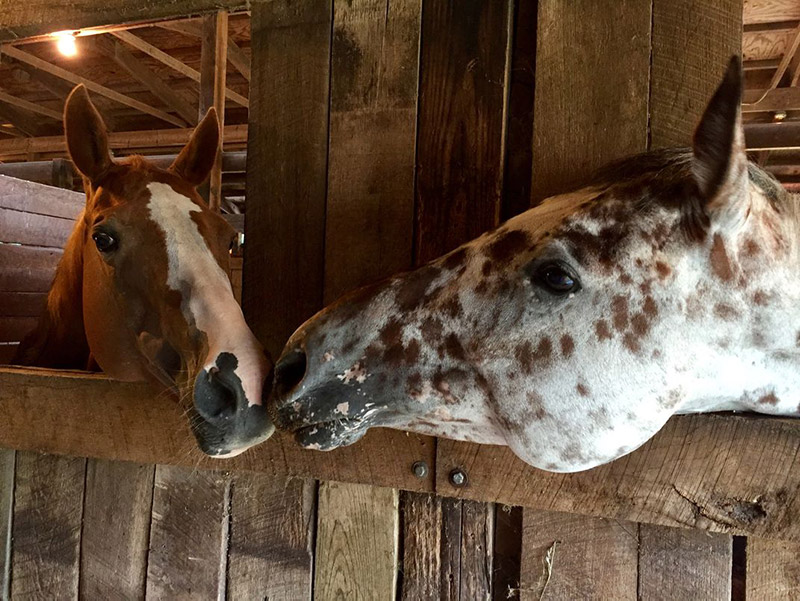Section 1 | Respiratory Diseases in Horses: Streptococcus equi
Industry
Page 06 /
Transmission of Strangles
Strangles is extremely contagious. Isolating horses with Strangles is critical to prevent spread. Animals may be shedding the bacteria into the environment when they do not show symptoms of the disease.
Contact is Key
Direct and horse-to-horse contact are common routes of transmission for Strangles. However, it can also be spread through indirect contact, which could happen through contaminated housing, water sources, feed, feeding tools, tack, or clothing, transfer of pus from abscesses, and discharge from the eyes and nose2. Isolation and good biosecurity protocols are critical to preventing the spread of Strangles to other horses in the barn.

Source: Smithsonian Magazine
Be patient: after the abscesses heal or the discharge stops, horses may appear healthy, but they could still be spreading the bacteria. This is why the standard recommendation is to isolate affected horses for at least 4-6 weeks after the discharges of pus have dried. It is also recommended to clean, disinfect, and allow sunlight access to all equipment and surfaces exposed to the infected horse.
Ask your veterinarian for tips on cleaning and disinfection — they can provide you with specific recommendations on the best practices and products to use!
The Silent Carrier
Another source of spread can occur from certain horses that don’t clear the infection completely — some bacteria stays behind (in what are called guttural pouches). Roughly 10% of infected horses will fail to clear all infectious material1. These horses may sporadically spread bacteria from these areas for months and even years!
Your veterinarian can test samples from a nasopharyngeal or guttural pouch wash to identify the carrier. If Streptococcus equi is identified, your veterinarian will need to remove infective material from the guttural pouches and treat them with an antimicrobial medication. A screening procedure to identify these horses should start 3 weeks after the resolution of the last case. A key part of control therefore requires that you work with your veterinarian to create protocols to identify and treat these silent carriers.
An Outbreak Situation
The key to managing an outbreak of strangles is identifying and isolating new cases as quickly as possible. This can be accomplished by screening all horses for a fever twice daily and isolating those with a fever. Bacteria are generally not spread by infected horses until 1-2 days after a fever has developed, so isolating new cases will likely be effective in preventing transmission2.
For more information, check out our pages Improving Biosecurity on the Farm and Key Aspects of Animal Husbandry.
References:
- Waller, A.S. 2014. New perspectives for the diagnosis, control, treatment, and prevention of strangles in horses. Vet Clin NA: Equine Prac. 30:591-607.
- Boyle, A.G., J.F. Timoney, J.R. Newton, M.T. Hines, A.S. Waller, and B.R. Buchanan. 2018. Streptococcus equi infections in horses: Guidelines for treatment, control, and prevention of strangles – Revised consensus statement, J Vet Intern Med. 32:633-647.